Caddinet 1780-85
Silver gilt; the knives with steel blades; the case of leather with silk and braid lining | 10.0 x 37.7 x 30.3 cm (whole object) | RCIN 45182

Luigi Valadier (1726-1785)
Master: Caddinet 1780-85


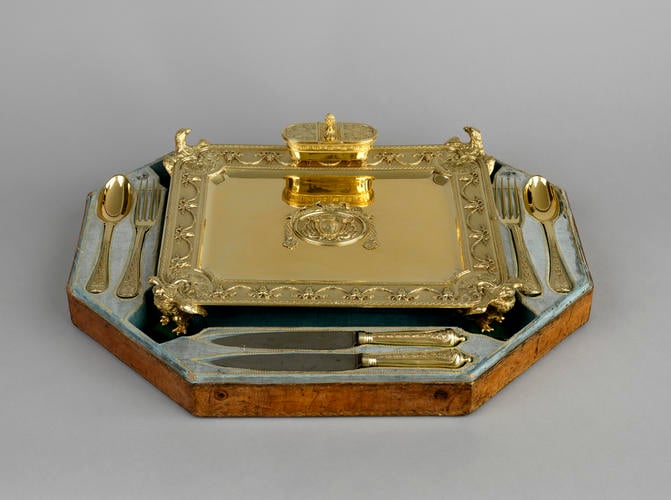
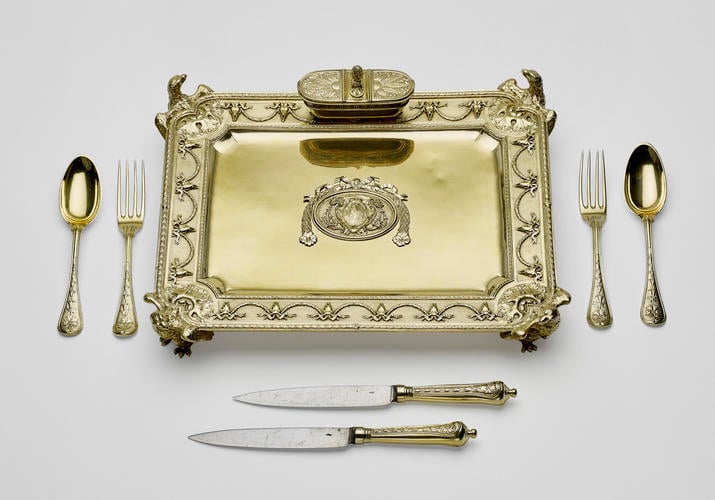


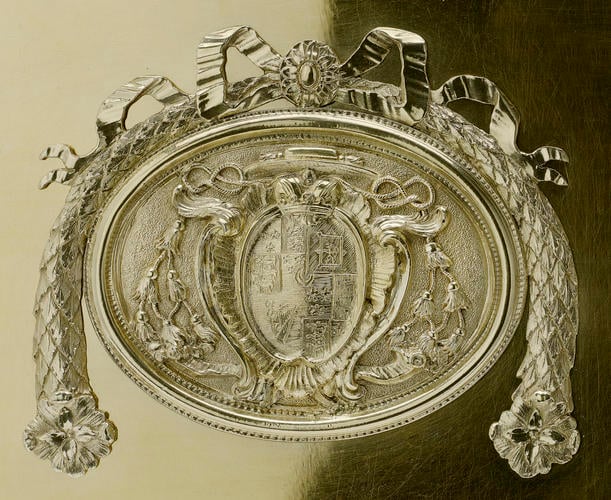

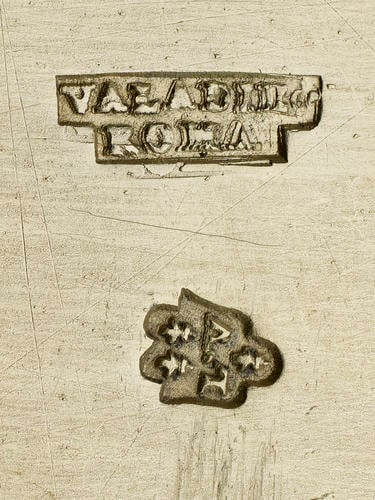

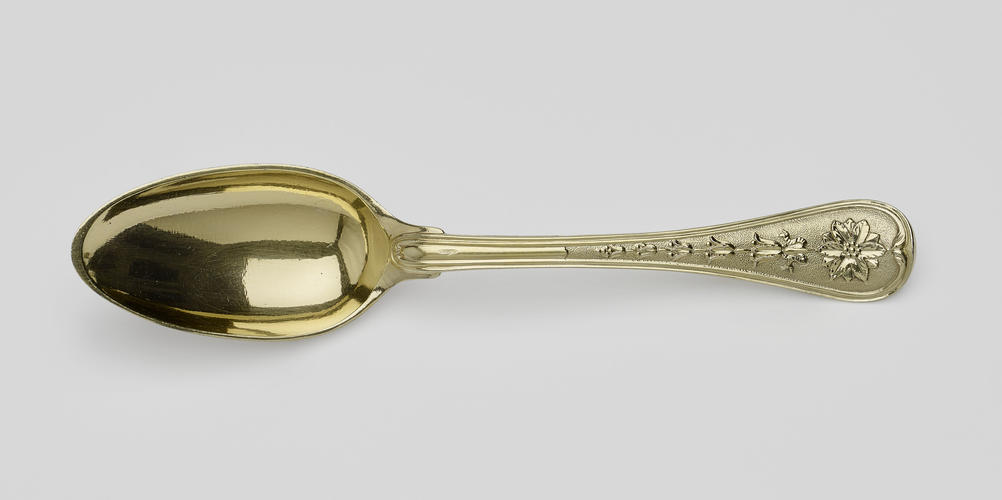
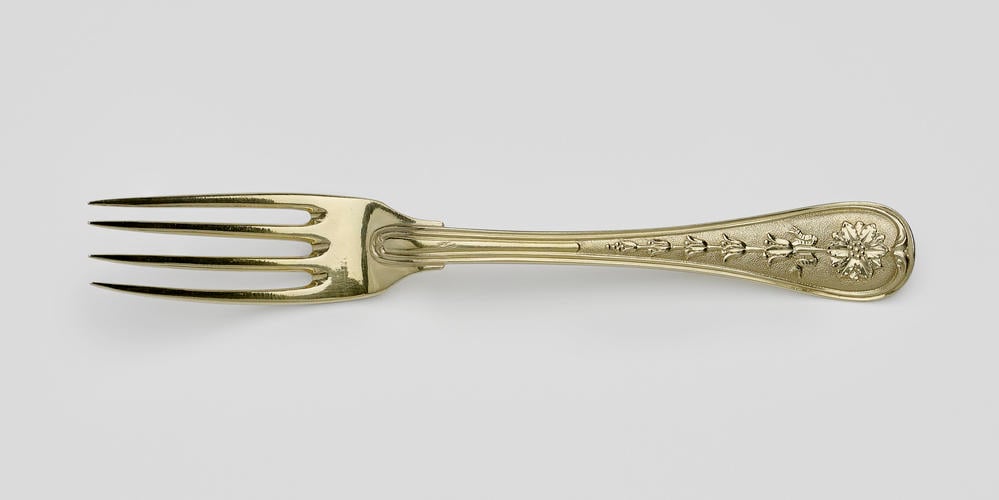

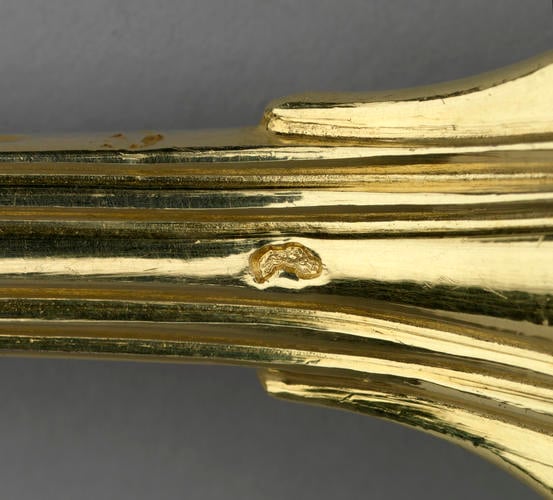


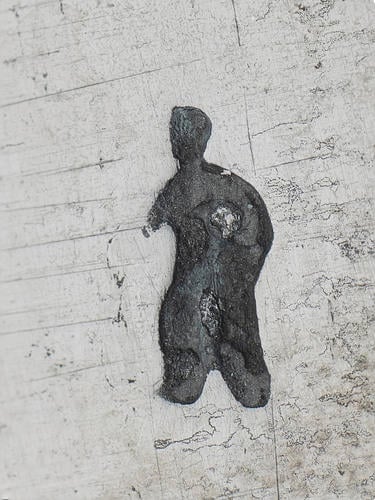
-
A silver-gilt caddinet, with a double-lidded, sarcophagus-shaped salt on one side. The caddinet applied in the centre with the coat of arms of Cardinal Henry Stuart, within a border composed of garlands and bucrania, supported by cast eagles at the four corners. With two spoons, two forks and two knives, the blades of steel, and with a leather case, lined with blue silk and braid. The caddinet is stamped with the mark of Luigi Valadier.
The caddinet was traditionally covered by a linen napkin and used to serve bread, with the small box used to contain salt or spices. These objects were reserved for the use of the aristocracy, and in Britain they were exclusively used by royalty. Cardinal Henry Stuart was the second son of James Edward Stuart (the Old Pretender) who spent much of his exile from Britain in Rome. The Cardinal was undoubtedly making a political point by commissioning a caddinet, particularly by this date when their use had largely faded entirely. By owning a caddinet, the Cardinal was stating his right to the English throne. After the death of his elder brother, Charles Edward Stuart, Henry was the last of the Stuart line and styled himself Henry IX. A contemporary visitor to the Cardinal's residence in April 1803, commented that 'he had a plate, napkin, salt-cellar and glass, different from the others, and nobody eat till after he was help'd...'.
The caddinet was originally accompanied by a cellaret or casket for containing liqueurs. Both these objects were in the collection of the 11th Duke of Hamilton, and were divided at the sale of Hamilton property in 1919. The caddinet was acquired for the Royal Collection by Queen Mary, displaying her keen interest in objects of family interest and in particular her fascination with the Stuart dynasty. It was placed in the so-called Stuart Room in Windsor Castle, with the other relics relating to the family.
Over three generations, the Valadier family were the foremost goldsmiths and bronze workers in Rome, completing commissions for the Pope as well as numerous cardinals and others associated with the Church. Luigi became a Master Goldsmith in 1760. Among his clients was Pope Pius VI, who visited Valadier's workshop four times, as well as Archduke Ferdinand of Austria, Karl IV, and Elector Palatine. He also received commissions from churches throughout the world – his works being found in Mexico, Spain and Austria as well as throughout Italy. Despite this distinguished clientele, however, Luigi drowned himself in the Tiber in 1785, possibly as a result of heavy debt.
Caddinet struck with maker's mark of Luigi Valadier and stamped, VALADIER / ROMA and with French control marks; spoons and forks struck on side of handle with maker's mark of Luigi Valadier and French control marks; mark's on the knife handles worn, the blades stamped with a walking figure; oval plaque on caddinet engraved with coat of arms of Cardinal Henry Stuart, with coronet and cardinal's hat above.Provenance
Cardinal Henry Stuart, Duke of York (1725-1807); collection of 11th Duke of Hamilton by 1862; Christie's, London, 4 November 1919 (lot 110); purchased by Queen Mary (£480)
-
Creator(s)
(silversmith)(nationality)Acquirer(s)
-
Medium and techniques
Silver gilt; the knives with steel blades; the case of leather with silk and braid lining
Measurements
10.0 x 37.7 x 30.3 cm (whole object)
Category
Object type(s)
Place of Production
Rome [Lazio]







